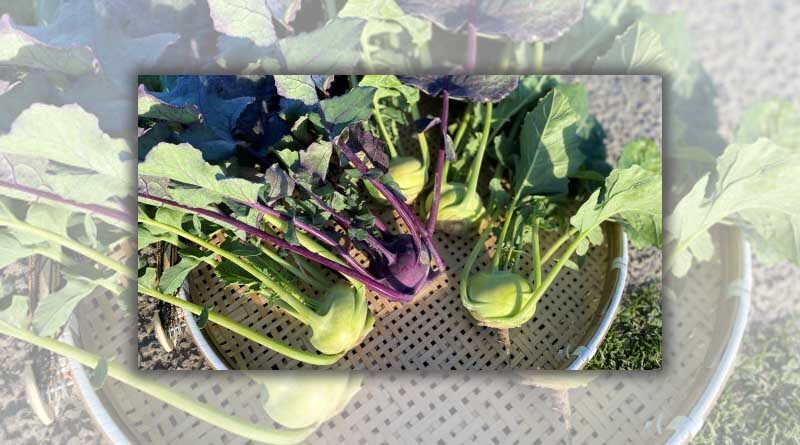Humble heritage vegetable brings new wave of opportunity for growers
27 September 2022, NZ: A renewed interest in nutritious heritage vegetables like kohlrabi is encouraging growers like Calvin Gedye to be experimental in the field. KRISTINE WALSH reports.
The way Calvin Gedye tells it, there was a time when a Michelin-level chef would lose a star just for including kohlrabi on their menu.
“That goes back to just after World War II when people considered it to be peasant food and didn’t want to have anything to do with it,” says the Gisborne grower. “But times have changed. These days, consumers are very interested in heritage vegetables, especially those with a lot of nutritional value.”
These days Michelin-starred chefs are pumping out recipes featuring everything from kohlrabi purée to pickled kohlrabi and even kohlrabi sliced wafer-thin to form gluten-free dumpling wrappers.
That’s why Calvin decided to grow an experimental crop for his direct-to-consumer business, The Tasty Vege Co.
Resembling a root vegetable, kohlrabi is actually a member of the brassica family. Its name is translated from both German – “kohl” meaning cabbage – and the historic Italian word “rape”, meaning turnip.
It features a stem that swells to a turnip shape above the ground and has a taste reminiscent of – but slightly sweeter than – broccoli stems and cabbage. Both the bulb and leaves are loaded with vitamins, minerals and fibre.
While it comes in red or green varieties, the crisp inside flesh of kohlrabi is always pale green and if chilled, keeps very well.
It likes a bit of sun to get those nice fat bulbs but grows most of the year round. Calvin says you can even have a crop right through summer as well as the winter months if you keep an eye out for bolting. A bit of extra water can stave off that bolting, but kohlrabi don’t like wet feet so decent drainage is advised.
Calvin first saw kohlrabi in an online video that documented the journey of “a couple of American boys” who were growing it in Pennsylvania.
“It looked interesting, so I talked to some other growers who were giving it a go,” Calvin says. “There was some being grown… just not a lot.”
Roasted, puréed, in fritters, stir-fries, soups or a ‘slaw; there are many ways a modern cook can use kohlrabi. While not formally on a diet, Calvin reckons he could drop a kilogram or two by swapping mashed potatoes for his Kohlrabi purée.
“It’s a way of getting lots of nutrients in a low-carb dish, which is really good for you,” he says. “Even better, it’s delicious, and that’s what we want from our food.”
One Tasty Vege staffer eats it raw, like an apple – but Calvin admits introducing lesser-known vegetables can be a hard-sell.
“It is one of those humble vegetables that has almost been forgotten about, so it is time to rediscover it,” he says. “But because there is not a lot of it around you have to educate people first.
“It was the same with broccoli in the late 1970s. New Zealanders didn’t know anything about it and didn’t really eat a lot, but now it is a shopping staple.”
Calvin’s super-power in terms of consumer education is his direct contact with buyers.
While pre-packed vegetable boxes are his main stock-in-trade, he also sells at the Gisborne Farmers’ Market and operates a side-of-the-road vege van.
“It’s those latter two that give us a really good indication of how people are responding to our more experimental products,” he says. “With the kohlrabi, one German woman who pulled up at the van was delighted to see it. She was really excited to have access to a food that had been a big part of her family history, and she just about bought the lot! But then you’ll get someone who has never heard of it but [sic] open to giving it a try.”
He believes that due to a growing interest in heritage vegetables, along with its nutritional value, the future for kohlrabi is bright.
The ‘cabbage turnip’ is not the only small crop Calvin grows – in response to consumer request he will soon be planting a crop of ginger.
“But with costs the way they are these days, everything has to earn its keep so you can’t go too wild,” he says. “The kohlrabi, though, has proved itself in the market so we’ll definitely continue to grow it.”
Also Read: Wholesale price of garlic in Madhya Pradesh lowest in last three weeks
(For Latest Agriculture News & Updates, follow Krishak Jagat on Google News)















